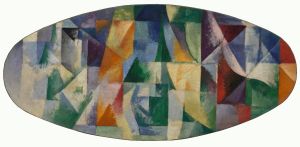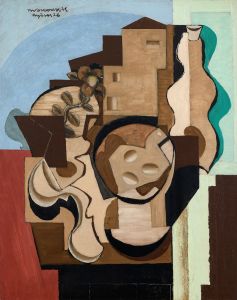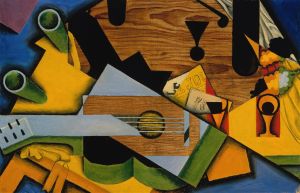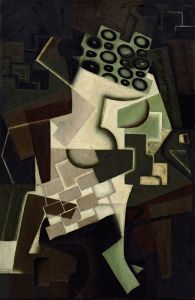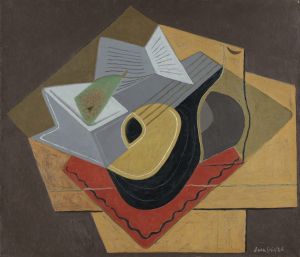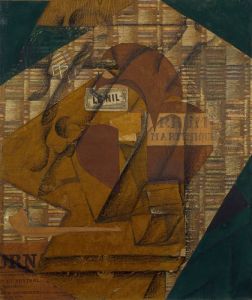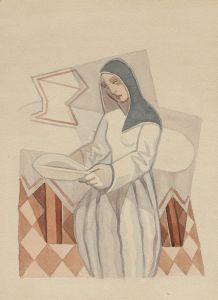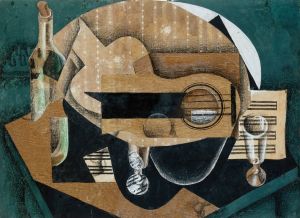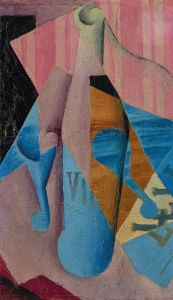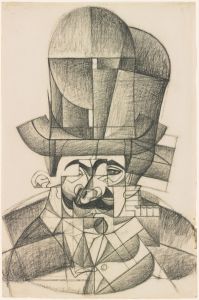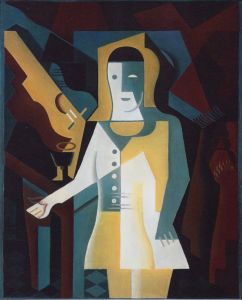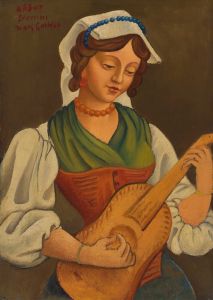
Verre Et Fruits
A hand-painted replica of Juan Gris’s masterpiece Verre Et Fruits, meticulously crafted by professional artists to capture the true essence of the original. Each piece is created with museum-quality canvas and rare mineral pigments, carefully painted by experienced artists with delicate brushstrokes and rich, layered colors to perfectly recreate the texture of the original artwork. Unlike machine-printed reproductions, this hand-painted version brings the painting to life, infused with the artist’s emotions and skill in every stroke. Whether for personal collection or home decoration, it instantly elevates the artistic atmosphere of any space.
"Verre et Fruits" (Glass and Fruits) is a painting by the Spanish artist Juan Gris, created in 1919. Juan Gris, born José Victoriano González-Pérez, was a prominent figure in the Cubist movement, which was pioneered by artists like Pablo Picasso and Georges Braque. Gris's work is known for its clear, rational compositions and his use of vibrant colors and geometric shapes.
"Verre et Fruits" is a still life painting, a genre that Gris frequently explored throughout his career. The painting exemplifies his mature Cubist style, characterized by the use of fragmented forms and a meticulous arrangement of objects. In this work, Gris depicts a glass and various fruits, which are rendered through a series of overlapping planes and facets. The composition is carefully balanced, with each element contributing to the overall harmony of the piece.
Gris's approach to Cubism was distinct from that of his contemporaries. While Picasso and Braque often employed a more monochromatic palette and focused on the deconstruction of form, Gris introduced a greater sense of order and clarity to his compositions. He also made extensive use of color, which added a new dimension to the Cubist aesthetic. In "Verre et Fruits," the use of color is particularly notable, with the vibrant hues of the fruits contrasting with the more subdued tones of the glass and background.
The painting reflects Gris's interest in the interplay between representation and abstraction. While the objects in the painting are recognizable, they are also abstracted through the use of geometric shapes and a fragmented perspective. This duality is a hallmark of Gris's work and is one of the reasons he is considered a key figure in the development of Cubism.
"Verre et Fruits" is also significant for its exploration of texture and surface. Gris often incorporated elements of collage into his paintings, and while "Verre et Fruits" is not a collage, it demonstrates his interest in the tactile qualities of different materials. The glass, for example, is depicted with a smooth, reflective surface, while the fruits have a more textured appearance. This attention to detail adds depth and complexity to the composition.
The painting is housed in the Museo Nacional Centro de Arte Reina Sofía in Madrid, Spain, which holds an extensive collection of works by Juan Gris and other leading figures of the early 20th century avant-garde. "Verre et Fruits" is considered one of Gris's masterpieces and is an important example of his contribution to the Cubist movement.
In summary, "Verre et Fruits" by Juan Gris is a significant work that showcases the artist's mature Cubist style. Through its use of color, geometric forms, and careful composition, the painting exemplifies Gris's unique approach to Cubism and his ability to balance representation with abstraction. The work remains an important part of the Cubist canon and continues to be celebrated for its artistic innovation and beauty.





